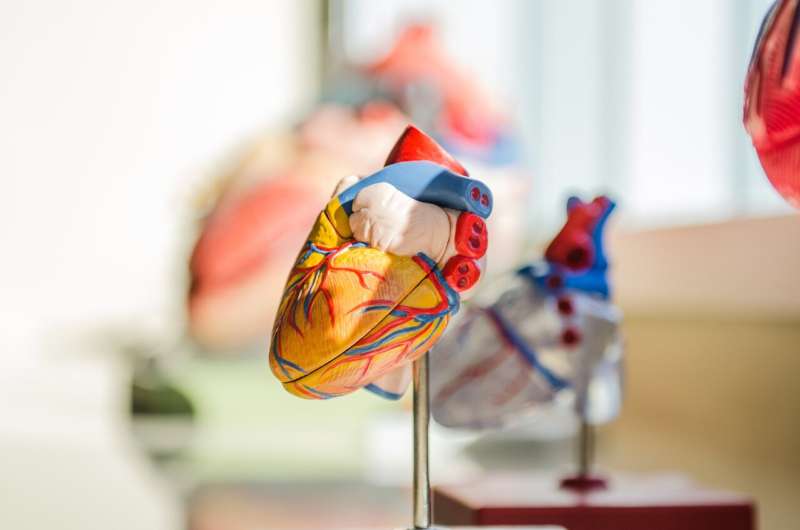This article has been reviewed according to Science X's editorial process and policies. Editors have highlighted the following attributes while ensuring the content's credibility:
fact-checked
peer-reviewed publication
trusted source
proofread
New guidance: Identifying the cause of heart muscle disease in children is key to effective treatment

Treating children with cardiomyopathy should be personalized based on the root cause, symptoms and progression of the condition in each child, according to a new American Heart Association scientific statement published today in the journal Circulation.
Cardiomyopathy is a disease of the heart muscle that may make it difficult for the heart to pump blood to the rest of the body, and that may lead to heart failure and death. There are several types of pediatric cardiomyopathies, and they are all rare yet life-threatening conditions. They affect 1 of every 100,000 children, according to population-based studies in the United States, Finland and Australia.
The new scientific statement, the first to focus on treatment for cardiomyopathy in children, emphasizes important differences among the various types of treatments for cardiomyopathies and heart failure in children and adults. The statement is a companion to the Association's 2019 scientific statement focused on the diagnosis of pediatric cardiomyopathy.
"Children's cardiomyopathies may have similar names to cardiomyopathies in adults; however, they often have very different causes, different risk factors, different paths of progression and different outcomes," said Steven E. Lipshultz, M.D., FAHA, chair of the statement writing group. "Children don't have the same behavioral or environmental factors contributing to cardiomyopathy—in general, they don't smoke; they don't drink alcohol; they don't have long-standing conditions such as obesity or Type 2 diabetes. So, treatments in children, which may range from replacing missing enzymes to heart transplantation, must be tailored to the root causes of their cardiomyopathy."
Many of the causes of cardiomyopathy in children are related to genetic abnormalities—rather than Type 2 diabetes, alcoholism, long-term high blood pressure or family history, as seen in adults. Symptoms of cardiomyopathy in children may include difficulty breathing; heart palpitations; fainting during physical activity; swelling in the ankles, feet, legs, abdomen, or congestion of neck veins; or heart failure symptoms, such as trouble breathing, poor feeding or growth, excessive sweating, low blood pressure or fatigue.
The statement writing committee focused on treatment for the most common cardiomyopathies in children:
- Dilated cardiomyopathy occurs when the heart is enlarged and the pumping chambers contract poorly.
- Hypertrophic cardiomyopathy is characterized by a thickened, stiff heart muscle, making it difficult for the heart to relax and for blood to fill the heart's chambers.
- Restrictive cardiomyopathy is a rare form of heart muscle disease in which the stiffened heart muscle does not allow the ventricular chambers to fill with blood normally, backing up blood into the atria (the top chambers of the heart), lungs and body, causing the symptoms and signs of heart failure.
Pediatric cardiomyopathy may be diagnosed in a variety of stages—some patients may carry a genetic abnormality for the condition yet have no symptoms, while others may have severe symptoms or end-stage disease, according to the statement writing committee. Physicians are urged to thoroughly examine and evaluate their pediatric patients to identify the root cause of the condition to develop a treatment plan.
"Genetic testing of all children with cardiomyopathy is prudent and is likely to have clinical value," said Lipshultz, who is also a professor in the department of pediatrics and former chair of pediatrics at the University at Buffalo's Jacobs School of Medicine and Biomedical Sciences in Buffalo, New York. "Such genetic screening may result in financial and emotional cost savings."
Other key points from the statement writing committee:
- Treatment may be initiated in some pediatric patients who are at risk for cardiomyopathy before they develop symptoms to diminish the progression of the disease.
- Adult heart failure treatments have limited effectiveness in pediatric dilated cardiomyopathy, yet some evidence suggests their use has contributed to a decrease in the death rate among children with the condition.
- Therapies to prevent sudden death in children with hypertrophic cardiomyopathies, including exercise limitations or an internal defibrillator, continue to evolve and have age- and size-specific parameters compared to adult treatments and devices.
- A heart transplant is an acceptable treatment for end-stage pediatric cardiomyopathy. While ventricular assist devices are commonly used as a temporary measure while awaiting a heart transplant, the devices are associated with a low rate of ventricular recovery, similar to the results among adults.
"The future is promising, as limitations in sample size and funding in pediatric clinical trials now are being addressed with the use of learning networks involving multiple pediatric cardiomyopathy centers," Lipshultz said. "Innovative use of multi-center registries and adaptive trial design have the potential to advance and refine future cause-specific therapy options for pediatric cardiomyopathy."
More information: Treatment Strategies for Cardiomyopathy in Children: A Scientific Statement From the American Heart Association, Circulation (2023). DOI: 10.1161/CIR.0000000000001151





















